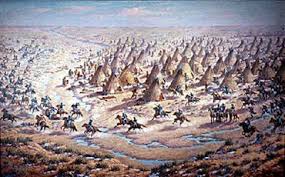
American history is filled with accounts of Indians being massacred by the U.S. Army, by American civilians, and others. Some of these “incidents” are well-known to the general public: Wounded Knee, the Washita, and Sand Creek. Others, such as the massacre of Heavy Runner’s Blackfoot band, are less well-known. In 1870, soldiers under the leadership of Colonel E. M. Baker killed 217 peaceful Blackfoot men, women, and children on the Marias River in Montana.
Background:
In the years both before and after the Civil War, many Americans came to Montana seeking their wealth either through mining or cattle ranching. Malcolm Clarke was one of those who settled down as a cattle rancher. Clarke soon married a Blackfoot woman, Kohkokima (Cutting Off Head Woman). Clarke gains the respect of the Blackfoot and was initially given the name White Lodgepole. Later, he was given the name Four Bears after he killed four grizzlies in one day.
In 1867, some Blackfoot relatives of Kohkokima, come to visit the Clarke ranch. In the group were Owl Child (Ne-tus-che-o, Kohkokima’s cousin), his wife, mother, sister, and younger brother. As a result of this visit something went wrong which created bad blood between Owl Child and the Clarke men. One version of the story, told by the Blackfoot, alludes to improper advances made by the rancher to the wife of the Piegan cousin while Horace Clarke and Owl Child were hunting in the nearby mountains. Another version of the story, usually told by non-Indians, says that Owl Child stole some Clarke horses and that Clarke publically beat him.
Two years later, a Blackfoot party led by Owl Child approached the Clarke ranch in a friendly fashion. With Owl Child are Black Weasel, Eagle’s Rib, Bear Chief, and Black Bear. Owl Child told Clarke that he had come to invite him to Mountain Chief’s village. Black Weasel, who was with the party, was Mountain Chief’s son.
Mountain Chief had disliked Americans since three Americans shot his brother and the authorities had done nothing about it. He banned all Americans from his village, but he stayed friendly with Malcolm Clarke because of his marriage to Kohkokima.
Suddenly, Bear Chief shot one of Clarke’s sons in the head. When Clarke rushed out of the house, he was shot dead by Eagle’s Rib. About 25 warriors then came out of the woods and proceeded to destroy everything in the house.
Since Malcolm Clarke was a prominent rancher, the Montana press clamored for revenge against the Blackfoot, with little concern for the actual killers. However, the military commander at Fort Shaw remained calm. He reported:
“The only Indians within reach are friendly, and nothing could be worse than to chastise them for offenses of which they are not guilty.”
However, General Sheridan, with a reputation as an Indian fighter, was in Chicago and hearing from the American settlers who wanted revenge. In his book Blackfoot Fur Trade on the Upper Missouri, John Lepley writes:
“An aggressive man, General Sheridan believed in total war against the Indians to make them pay for their predations on the whites.”
Sheridan ordered Colonel E. M. Baker to obtain revenge. It was not about justice: there was little concern for capturing the actual murderers. It was about retaliation: attacking the Blackfoot camps– any Blackfoot camp. Baker was ordered to give the Blackfoot an exhibition of military force to show the Blackfoot that they were not to trifle with the Americans. Baker’s orders from General Sheridan:
“If the lives & property of the citizens of Montana can best be protected by striking Mountain Chief’s band of Piegans, I want them struck.”
The Battle:
It was January of 1870 when the soldiers set out in search of Mountain Chief’s camp. The temperature was well below zero. Riding with the soldiers is Horace Clarke, Malcolm Clarke’s son.
On the Marias River, the soldiers encounter a Blackfoot camp. As the army approached the camp, scout Joe Kipp recognized that it is the friendly village of Heavy Runner and informed the commander that this was the wrong village. The officer ordered the soldiers to shoot Kipp if he yelled again.
As the soldiers attacked, Heavy Runner ran toward Baker waving his Washington medals and his letters of recommendation showing that he was friendly to the United States. One of the soldiers shot Heavy Runner, killing him. Baker ordered his troops to fire. The Indians did not return fire as all of their able-bodied men were on a buffalo hunt. When the firing was over the soldiers simply shot the wounded Indians. They then collected the lodges and property of the Indians in great piles, and set fire to them.
One hundred and forty women and children were taken prisoner in the attack. In her book Montana Battlefields 1806-1877: Native Americans and the U.S. Army at War, Barbara Fifer describes the camp:
“The temperature hovered about forty degrees below zero and many people were sick with smallpox, aching with high fevers and covered with running sores.”
After being held for a short time, they were released to face the cold without blankets, shelter, or food. Many died from exposure.
The first official account of the “incident” claimed that 120 Blackfoot warriors were killed, an interesting statistic since nearly all of the men were out hunting. Later, the official report was modified to indicate that a total of 173 Blackfoot were killed and that 148 of these were women, children, and elders. However, the scout Joe Kipp reported that he personally counted 217 dead.
The Aftermath:
At the time of the Heavy Runner massacre (dubbed the Baker Massacre in the eastern press), the U.S. government was debating over whether the Indian Office (later known as the Bureau of Indian Affairs) was to remain in the Department of the Interior or be transferred back to the War Department. The accounts of army brutality in this incident, including Horace Clarke’s testimony about the brutality of the attack against this friendly camp, helped stop the proposal to move Indian Affairs to the War Department. Commissioner of Indian Affairs Ely Parker, who was a Seneca Indian, was put in the position of defending the military operation as an effective way of dealing with the Blackfoot.
Mountain Chief and his people, upon hearing about the attack on Heavy Runner, avoided the army by crossing the border into Canada.
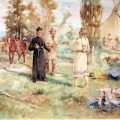
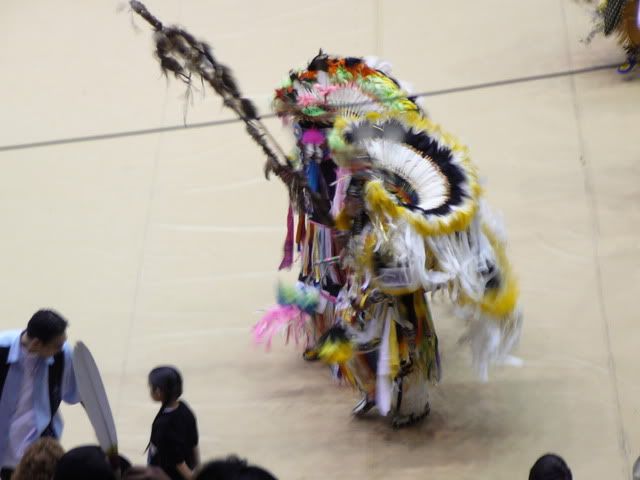
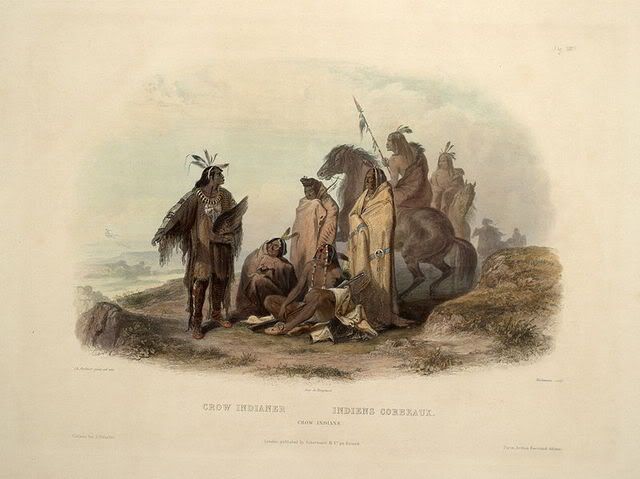
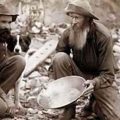
Leave a Reply